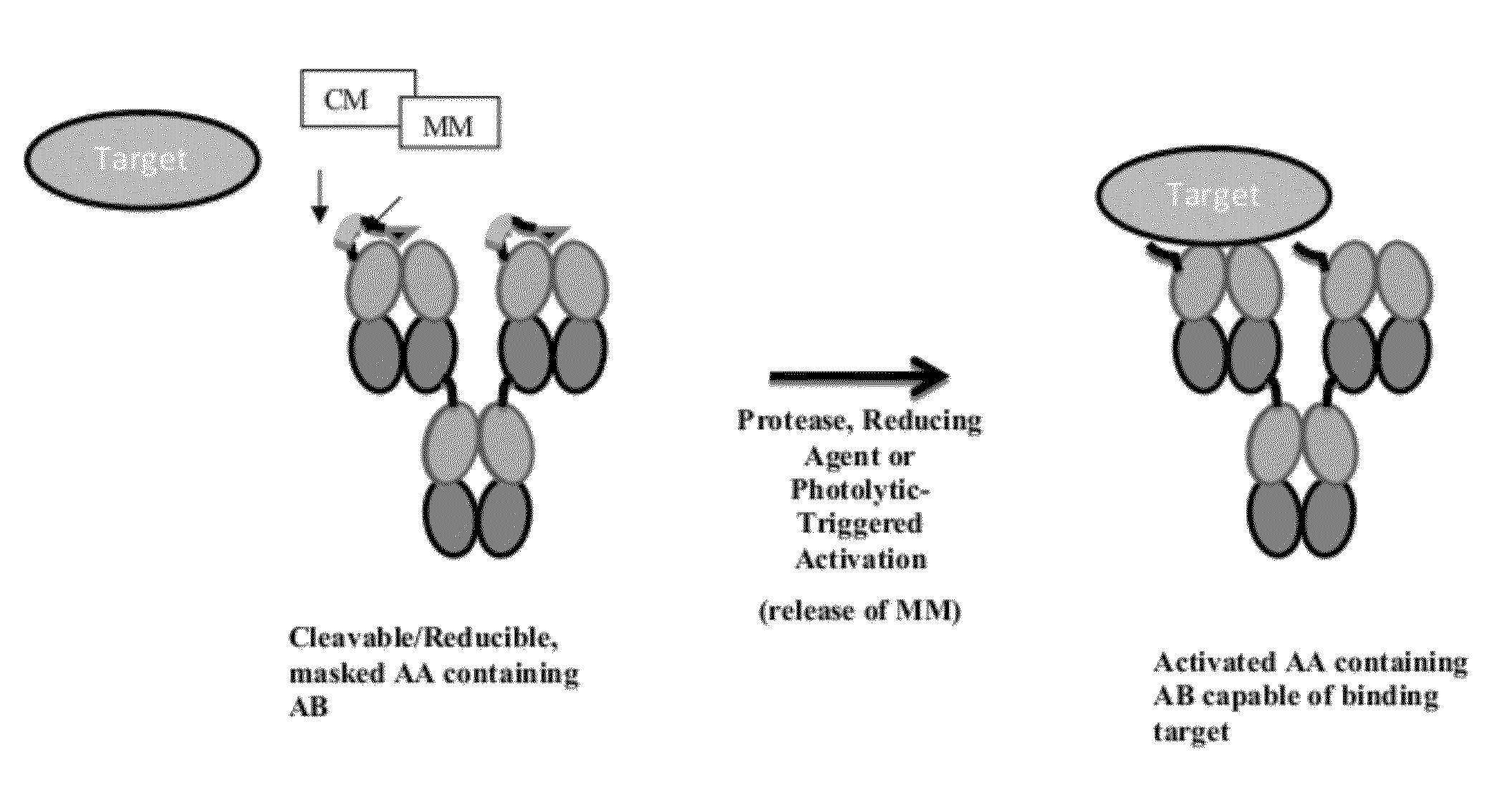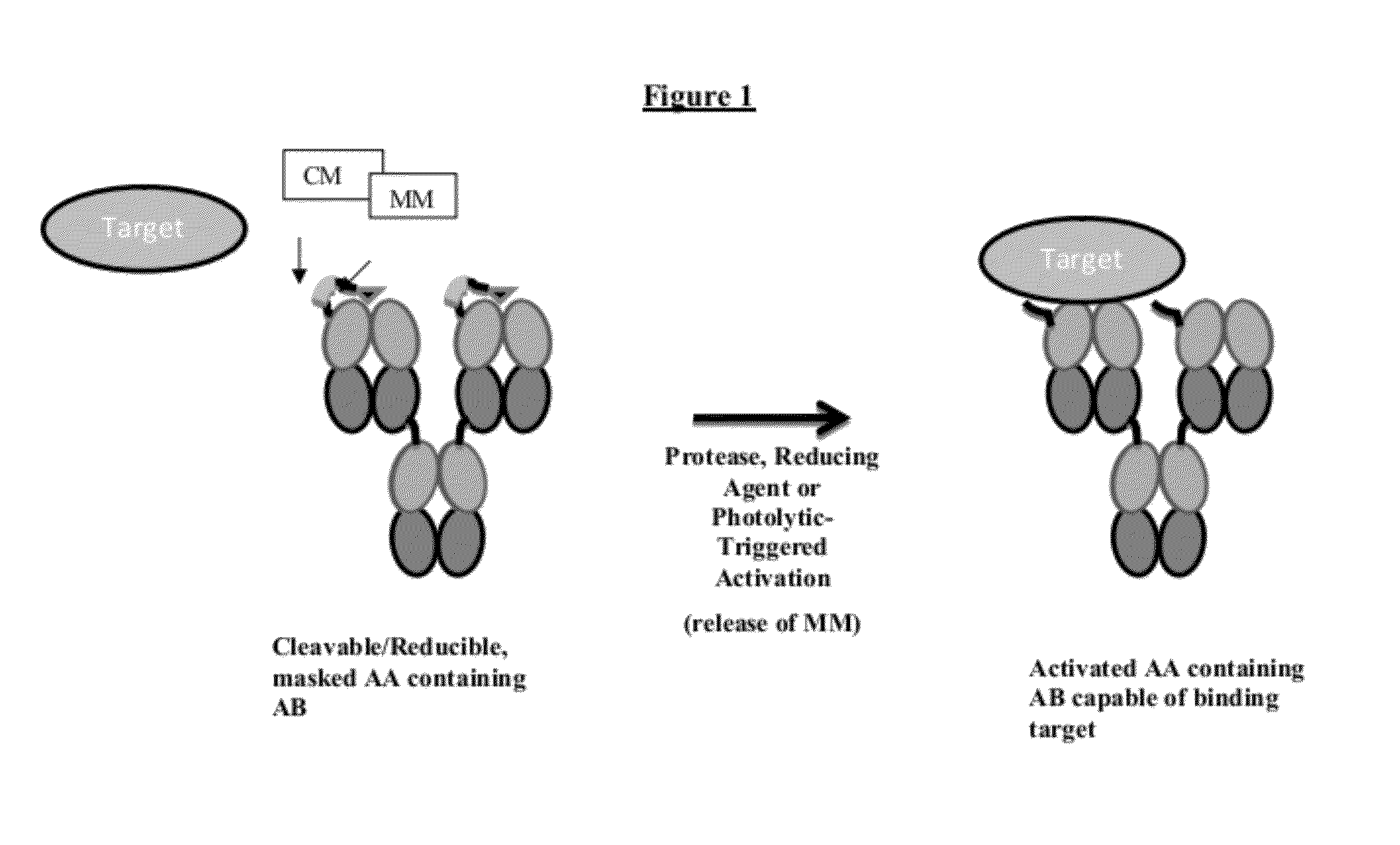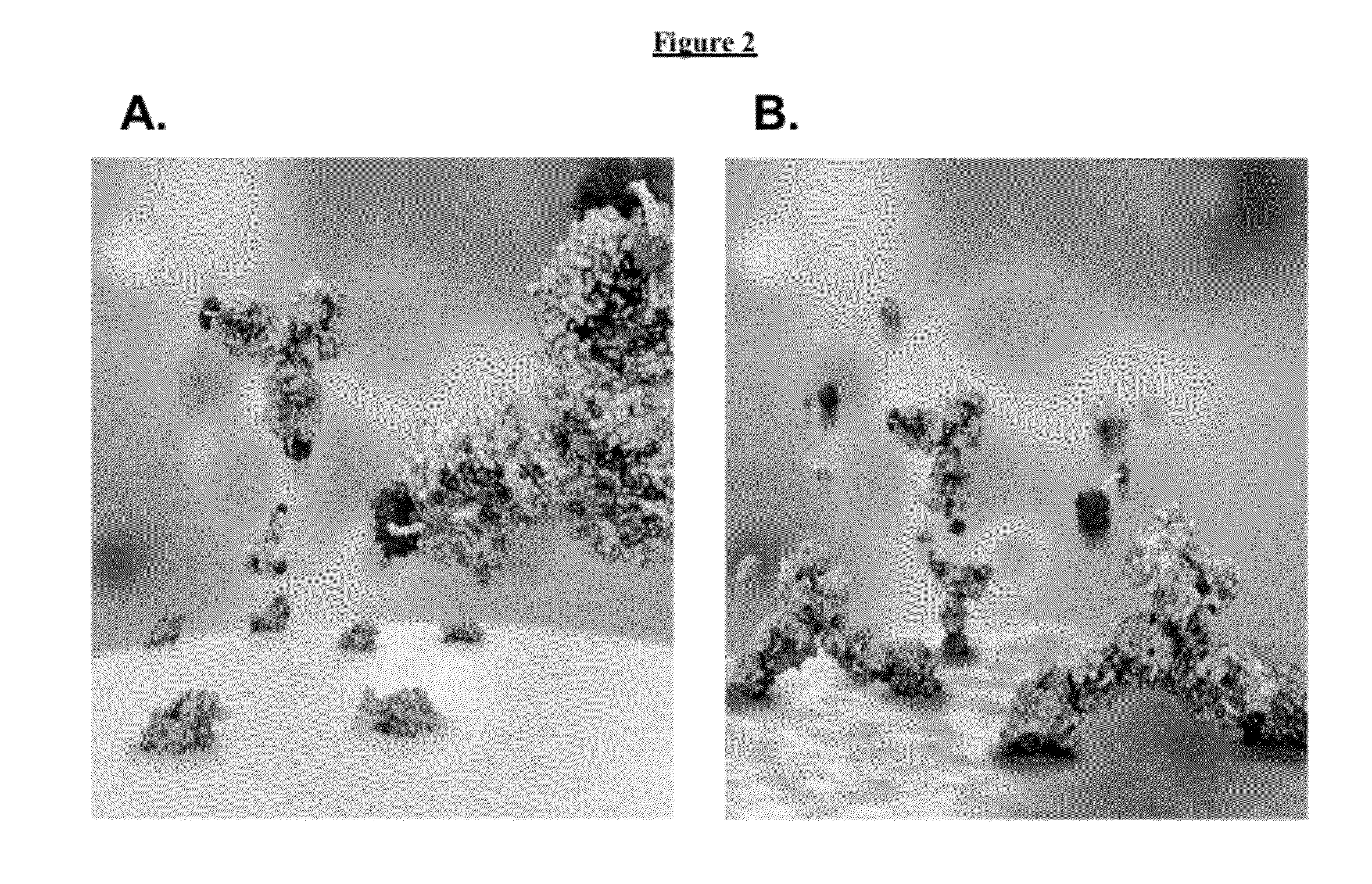Modified Antibody Compositions, Methods of Making and Using Thereof
a technology of modified antibodies and compositions, applied in the field of modified antibody compositions, methods of making and, can solve the problem of reducing the ability of abs to bind its target, and achieve the effect of reducing the ability of abs to bind
- Summary
- Abstract
- Description
- Claims
- Application Information
AI Technical Summary
Benefits of technology
Problems solved by technology
Method used
Image
Examples
example 1
Screening of Candidate Masking Moieties (MMs)
[0421]In order to produce compositions comprising antibodies and fragments thereof (AB) coupled to MMs with desired optimal binding and dissociation characteristics, libraries of candidate MMs are screened. MMs having different variable amino acid sequences, varying positions of the cysteine, various lengths, and the like are generated. Candidate MMs are tested for their affinity of binding to ABs of interest. Preferably, MMs not containing the native amino acid sequence of the binding partner of the AB are selected for construction of the modified antibodies.
[0422]Affinity maturation of MMs for ABs of interest to select for MMs with an affinity of about 1-10 nM is carried out.
example 2
Screening of Modified Antibody and Activatable Antibody (AA) Libraries
[0423]In order to identify modified antibodies and AAs having desired switching characteristics (i.e., decreased target binding when in an masked and / or uncleaved conformation relative to target binding when in a masked and / or cleaved conformation), libraries of candidate modified antibodies and candidate AAs having different variable amino acid sequences in the masking moieties (MMs), varying positions of the cysteine in the MM, various linker lengths, and various points of attachment to the parent AB are generated.
[0424]A scheme for screening / sorting method to identify candidate AAs that display the switchable phenotype is provided here. The libraries are introduced via expression vectors resulting in display of the AAs on the surface of bacterial cells. After expansion of the libraries by culture, cells displaying the AA polypeptides are then treated with the appropriate enzyme or reducing agent to provide for ...
example 3
In vitro Screening of Modified Antibodies to Determine Masking Efficiency of the MM
[0426]In order to screen modified antibodies and AAs that exhibit optimal characteristics when masked, for example, only 10% of binding to the target when in a masked state and in the presence of target, ABs coupled to different MMs or ABs coupled to the same MMs at different points of attachment, or ABs coupled to the same MM via linkers of different lengths and / or sequences are generated.
[0427]The masking efficiency of MMs can be determined by the affinity of the MM for AB and the spatial relationship of the MM relative to the binding interface of the AB to its target. Discovery of an effective MM is based on affinity and as well optionally an empirical measure of masking efficiency. The time-dependent target displacement of the MM in the modified antibody or AA can be measured to optimize and select for MMs. A immunoabsorbant Target Displacement Assay (TDA) is described herein for the discovery and...
PUM
| Property | Measurement | Unit |
|---|---|---|
| equilibrium dissociation constant | aaaaa | aaaaa |
| dissociation constant | aaaaa | aaaaa |
| time | aaaaa | aaaaa |
Abstract
Description
Claims
Application Information
 Login to View More
Login to View More - R&D
- Intellectual Property
- Life Sciences
- Materials
- Tech Scout
- Unparalleled Data Quality
- Higher Quality Content
- 60% Fewer Hallucinations
Browse by: Latest US Patents, China's latest patents, Technical Efficacy Thesaurus, Application Domain, Technology Topic, Popular Technical Reports.
© 2025 PatSnap. All rights reserved.Legal|Privacy policy|Modern Slavery Act Transparency Statement|Sitemap|About US| Contact US: help@patsnap.com



